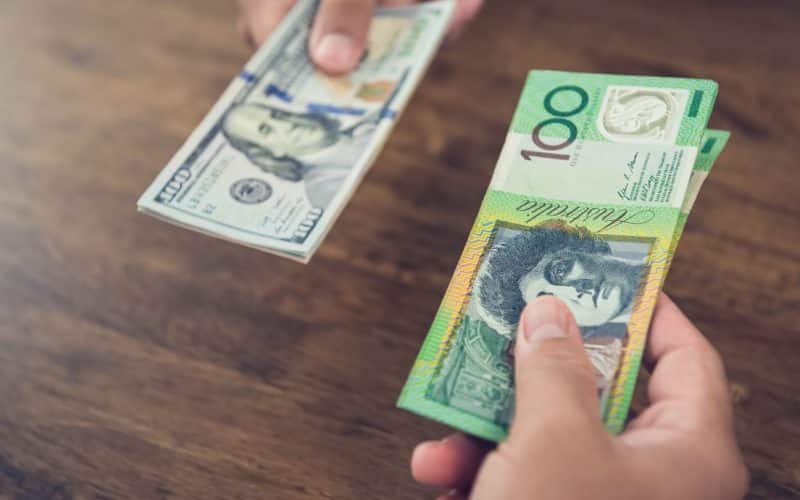What Is a Currency Swap?
A currency swap, also known as a cross-currency swap, entails exchanging interest—and sometimes principal—in one currency for the same amount in another. Throughout the duration of the deal, interest payments are exchanged at predetermined intervals. It’s a foreign exchange deal, and it’s not required by law to be reported on a company’s balance sheet. Before we go any further, there are a couple of details this post hopes to cover. These include; Cross currency swap basis, currency swap rates, and how they work.
Currency Swap Basis
Currency swaps were first used to get around exchange controls. These are regulatory restrictions on the buying and selling of currencies. While foreign exchange controls are commonly used by countries with poor and/or developing economies to restrict speculation against their currencies, most developed economies have done away with them in recent years.
Swaps are now more widely used to hedge long-term portfolios and adjust the two parties’ interest rate exposure. Companies doing business in other countries often use currency swaps to get better loan rates in the local currency. This comes as a better deal than they would have gotten if they borrowed money from a local bank.

How Does It Work?
In a currency swap, the parties determine ahead of time whether or not the principal sums of the two currencies will be exchanged at the start of the trade. An implied exchange rate is formed by the two principal numbers. If a swap includes exchanging €10 million for $12.5 million, an implied EUR/USD exchange rate of 1.25 is established. The same two principal sums must be exchanged at maturity. This introduces an exchange rate risk since the economy could have moved away from 1.25 in the interim.
Based on interest rate curves at inception and the credit risk of the two parties, pricing is normally expressed as London Interbank Offered Rate (LIBOR), plus or minus a certain number of points.
A currency swap can be accomplished in a number of ways. Many swaps rely on notional principal sums. This will help measure the interest due and payable per time but are not exchanged.
However, if the transaction is initiated with a complete exchange of principal, the exchange is reversed at the maturity date. Currency swap maturities can be negotiated for at least ten years. It makes them a very flexible foreign exchange process.
Exchange of Interest Rates in Currency Swaps
Fixed rate to fixed rate, floating rate to floating rate, and fixed rate to floating rate are the three types of currency interest rate swap. This means that in a euro-to-dollar currency swap, a party with an initial commitment to pay a fixed interest rate on a euro loan will exchange it for a fixed or floating rate in dollars. Alternatively, a party with a floating interest rate on a euro loan may swap it for a floating or fixed rate in dollars. A basis currency swap is a rate swap between two floating rates.
Furthermore, interest rate payments are typically measured quarterly and traded semi-annually. Though swaps may be arranged to meet specific needs. But since interest payments are made in various currencies, they are usually not netted.
Types of Currency Swap Contracts
Currency swaps, including interest rate swaps, are categorized according to the types of legs involved in the deal. The following are some of the most popular forms of currency swaps:
Fixed vs. floating interest rate payments: One leg of a currency swap is a stream of fixed interest rate payments, while the other leg is a stream of floating interest rate payments.
(Basis Swap) Float vs. Float: The basis swap is the term used to describe a float vs. float swap. Both swap legs in a basis swap reflect floating interest rate payments.
Fixed vs. Fixed: Fixed interest rate payments are made in all streams of currency swap contracts.
A party that decides to pay a fixed interest rate on a CAD loan, for example, can exchange that for a fixed or floating interest rate in USD when conducting a currency swap between USD and CAD. Another case point study will be the floating rate. If a party wants to swap a floating rate on a CAD loan for a floating or fixed rate in USD, they can do so as well.
Interest rate payments are measured per quarter or semi-annually.
The Cost of a Currency Swap
The pricing is focused on the LIBOR +/- spread, which is based on the credit risk between the exchanging parties. LIBOR is a benchmark interest rate used by major global banks in the interbank market to lend to one another for short-term borrowings. The spread is caused by credit risk, which is a premium dependent on the probability that the group will be able to repay the debt they lent with interest.
Exchange Rates and FX Currency Swaps
Swaps can last for years, depending on the terms of the deal. So the exchange rate between the two currencies in question on the spot market can fluctuate significantly over the duration of the trade.
Swaps can last for years, depending on the terms of the deal. So the exchange rate between the two currencies in question on the spot market can fluctuate significantly over the duration of the trade. Currency swaps are used by institutions for a variety of purposes. They know just how much money they’ll get and how much they’ll have to repay in the future. If they need to borrow money in a specific currency and expect that currency to appreciate substantially in the coming years, a swap will help them reduce the cost of repaying the loan.
FX Swaps and Cross-Currency Swaps
A currency swap is also known as a cross currency swap, and the two are almost identical in terms of functionality. However, there may be minor variations. A cross currency swap is similar to an FX swap in that the two parties share interest payments on the loans over the swap’s duration. This includes principal sums at the start and end. Furthermore, I nterest payments are often included in FX swaps, but not always.
However, interest can be charged in a variety of ways. It may be paid at a fixed rate, a floating rate, or both. For example, one party could pay a floating rate and the other pays a fixed rate, or both parties could pay floating or fixed rates.
This form of swap also helps borrowers get lower interest rates than they might get if they needed to borrow directly in a foreign market, in addition to hedging exchange-rate risk.
Real World Example
Consider a company that has US dollars but wants British pounds to start a new business in the UK. Meanwhile, a British corporation needs US dollars to make a US investment. They find each other through their banks and come to an understanding that they both get the money they need without having to go to a foreign bank for a loan. A move that would almost certainly come with higher interest rates and a larger debt load. Currency swaps are not required to be reported on a company’s balance sheet, whereas loans are.
What Is a Currency Swap and Why Is It Useful?
A currency swap is the exchange of interest (and sometimes principal) in one currency for the equivalent amount in another. Currency swaps are frequently used by companies conducting business abroad to obtain more favorable loan rates in the local currency than if they borrowed money from a local bank.
What Is the Advantage of Currency Swap?
A currency swap’s main objective is to reduce risk in the forex market by exchanging one currency for another at a predetermined rate. A currency swap is typically used by two companies or individuals to lower their risk exposure in the forex market.
What Are the Types of Currency Swap?
Currency swaps are classified into two types. Exchanging fixed interest payments in one currency for fixed interest payments in another is what a fixed-for-fixed-rate currency swap entails. Fixed interest payments in one currency are swapped for floating interest payments in another in a fixed-for-floating rate swap.
How Does a Foreign Currency Swap Work?
In an FX swap agreement, one party borrows one currency from the other and gives the other party another currency at the same time. Each party uses the promise to pay back the other as collateral, and the amount of the repayment is set at the FX forward rate at the beginning of the contract.
What Is the Risk of Currency Swap?
Cross Currency Swap Risk
If the counterparty to the swap fails to make payments, the party will be unable to repay their debt. Cross currency swaps with a swap bank present lessen this risk by thoroughly assessing party creditworthiness and ability to meet obligations.






